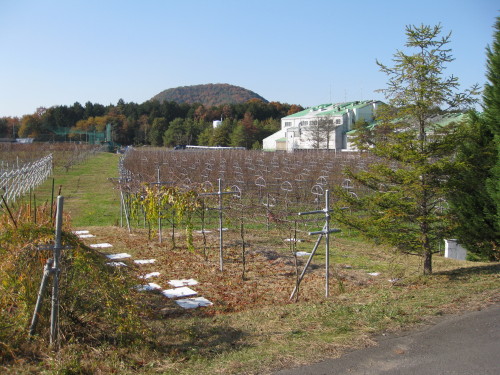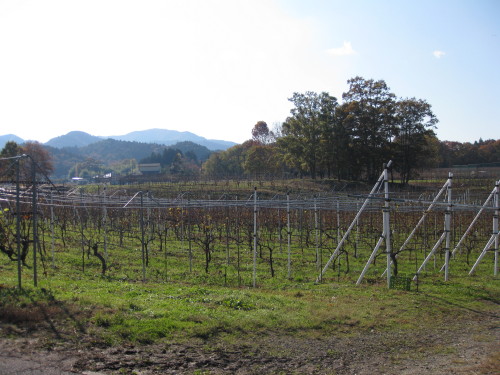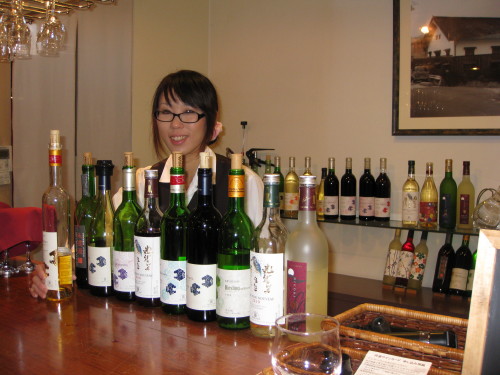Today we pile into Kyoko’s car for a tour of Tamba Winery in Toriino, not far from her home. Vintner and winery founder Tetsuo Kuroi chose this area for its rich soil and climatic conditions. Here the average day to night temperature fluctuations are some of the most extreme in Japan and ideal for wine production.
Finding that imported wines often did not suit the qualities of Japanese food, Kuroi founded his own winery in 1979 and set to making Western-style wines that would best complement Kyoto’s traditional cuisine. One difference in the method is to ferment some white wines after clarification in order to achieve a clearer taste. Another is to balance the character of Japanese food with high acidity and fruitiness in the wines.
The winery’s logo is a German proverb: Liebe geht durch den Magen. The verb doesn’t translate easily, but that literally means Love progresses (in the sense of develops or evolves) through the stomach. At first, that seems less than romantic, even a bit prosaic. However the Japanese word for love is amae. This, as Takeo Doi describes in The Anatomy of Dependence: The Key Analysis of Japanese Behavior, is part of the very fibre of Japanese thinking and quite different from love as it is understood in the West.
Doi describes how the word amae is psychologically related to infancy, a baby’s first experience of nurture at the breast which expands into a person’s dependence on and deep connection to others. Doi also speculates that in a larger archetypal sense, the Sun Goddess, a maternal and nurturing deity and mythological origin of the Japanese nation reinforces the idea. Therefore, love, as Japanese people understand it, derives from being dependent and nurtured divinely—with or without a capital D.
In the West also, romantic overtures and occasions marking anniversaries are preceded by food and often wine. Perhaps love does indeed progress through the stomach, from that state of food-satiated bliss that often precedes sex. (Think about it. It’s rarely the other way around.)
Kuroi’s wines (and I over-simplify) are not robust and fruit-forward like many New World wines or tannic and earthy in the Old World style. What strikes me first—because, of course, I don’t understand Japanese or know any of the back story before tasting—is their startling clarity.
They seem more like Nihonshu or sake, delicate with characteristics of water. However, after Kyoko translates the young woman conducting the tour and tasting, who explains that these wines are specifically designed to complement traditional Kyoto-style food, I get it. The wines have the same simplicity and subtlety found in Kyoto’s best cuisine. I’m just very, very sorry we aren’t eating.



